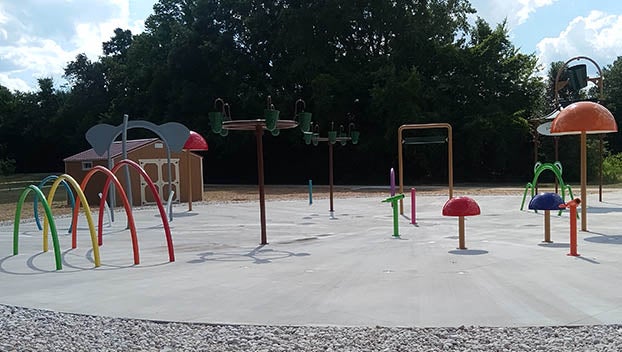Virginia’s gold mining regulations aren’t strong enough, report says
Published 12:41 am Thursday, November 3, 2022
|
Getting your Trinity Audio player ready...
|
RICHMOND – Virginia’s gold mining regulations aren’t strong enough to protect areas like Buckingham County. That comes from a report released Tuesday by the National Academies of Sciences, Engineering and Medicine. The report, a companion to the one being prepared by Virginia’s gold mining workgroup, cautions that before gold mining is even considered for approval, the state needs to update outdated rules created some 40 years ago.
“As these regulations currently stand, they are not up to the task of assessing the risks to Virginia’s communities and environment and ensuring that industry adheres to modern best practices,” said William Hopkins. A professor in the Department of Fish and Wildlife Conservation at Virginia Tech, he served this year as chairman of the committee who wrote the National Academies report.
The issue, Hopkins pointed out, is that Virginia’s current rules and regulations just aren’t built with today’s industrial gold mining in mind. The report echoes his argument.
“Overall, the committee found that the regulatory framework of Virginia appears to have been designed for operations like crushed stone quarrying and sand and gravel operations, not gold mining,” the report states on pg. 16. “As such, Virginia’s current regulatory framework is not adequate to address the potential impacts of commercial gold mining.”
Why is that? Most of the regulations haven’t been updated since the 1980s.
“There are few metal mining activities in the state and no active commercial gold mines,” the report says. “Given the current lack of metal mining activities in the Commonwealth, it is not surprising that the present regulatory framework appears geared toward projects such as sand and gravel mining and not gold mining.”
A lack of gold mining
Current mining laws work for the types of mines now operating in the state, the report says. But commercial gold mining is something different. It uses different techniques to get to the metal and needs a modern system, the report argues, to monitor impact. Part of the concern involves the water system. The James River, for example, is just two miles away from part of the land currently being prospected for gold in Buckingham County. That river delivers water to nearly 2.7 million Virginians. All it would take is one accident during actual mining, the report says. If the protection systems fail, that releases poisonous chemicals into the river, damaging the drinking water for millions of Virginians.
“A robust regulatory framework and modern best practices can significantly reduce many of the impacts associated with gold mining, but the risk of adverse impacts cannot be completely eliminated,” the report cautioned.
A new time, new tools needed
Things are different from 1804, when the first commercial gold mining operation started in Virginia. That was Whitehall Mine, near Shady Grove Church in Spotsylvania County. Now, as the report points out, advanced exploration methods may cause greater impacts. That includes impact on soil, air and public health in general.
Take, for example, any exploration and prospecting work. Prospecting and exploration is currently exempt from even some of the current regulations in place. The National Academies report points out that “there are currently no mineral mining regulations for exploration in Virginia that mandate the plugging of drill holes or the covering of drill cuttings from the hole.
“If best practices are not utilized for these closure activities, pollution of the local groundwater and surface water could occur,” the report points out. But due to a lack of regulation, there’s nothing requiring a company to follow those guidelines.
“This exemption for exploratory drilling also means that public notice to citizens and local communities is not required,” the report adds.
A company doesn’t have to notify when it’s drilling during the exploration phase. Residents, especially those close by, just find out often due to the noise.
EJ communities most at risk
Then there’s “the EJ problem”. Not everyone would be affected the same by the presence of a gold mine, the report also points out.
“These factors are likely to affect some communities more than others, particularly those with lower socioeconomic status and higher proportions of racial and ethnic minorities,” the National Academies report warns. “(That) could further exacerbate environmental injustice and health disparities.”
It’s a problem in a place like Buckingham County, where Canadian company Aston Bay Holdings is currently prospecting. The area has a a large number of “EJ” or environmental justice communities. In these areas, residents can’t afford to move even if someone would buy their land.
Environmental justice communities are identified by the U.S. Department of Health and Human Services as areas with a “substantial portion of (people) below the poverty line that is subjected to a disproportionate burden of environmental hazards.”
No part of Buckingham County falls outside of the low-income classification. In fact, Virginia’s economic data shows portions of Buckingham classify in the 93rd percentile of low-income residents in the state. That includes some areas around the prospecting site. In other words, there’s an issue with heavy poverty in some of the areas that would be affected by a gold mine the most.
What happens with gold mining now?
So the report is out. What happens next? Well, the National Academies report is part one of a two part process.
While any actual mining in Virginia could be years away, members of the General Assembly wanted to get ahead of the issue. That’s why Del. Elizabeth Guzman (D-Prince William) filed HB 2213 in 2021. The bill, which passed in that year’s regular session, put a few requirements in place.
First, a work group had to be set up to study the issue. It was divided into two parts. One of those was the National Academies group, assembled to evaluate the scientific aspects of gold mining. Now their report has been turned in. The second group includes representatives from Virginia Energy, the Department of Environmental Quality, the Virginia Department of Health, the Council on Environmental Justice, the Monacan Indian Nation and local government and citizen groups. They’ve been holding hearings over the last few months, collecting data. Their assignment is to take all of the information and put it together. Then they’re to make recommendations for the General Assembly to act on in their next session.
Workgroup members concerned about the report
Group members said they’ve read through this report and weren’t happy with what they saw.
“From what I’ve read so far, it confirms our local concerns that gold mining causes significant negative impacts,” said Kenda Hanuman. The Friends of Buckingham representative on the state workgroup said it’s clear Virginia’s regulatory framework is nowhere near prepared.
“I think this report shows that at the very least, Virginia needs a moratorium, if not an all out ban (on gold mining),” Hanuman said. She added that the state workgroup will need adequate time to review the report, before making recommendations of their own.
Her comments were echoed by Buckingham County Board of Supervisors Chairman Jordan Miles III, who also serves on the state workgroup.
“I am not surprised at the NAS’ conclusions,” Miles said. “It is crystal clear that the Commonwealth does not have a regulatory system that effectively and consistently reviews and examines the environmental impacts of gold mining. Without such, the impacts on water, public health, air, soil and the livelihoods of those living anywhere near a gold mine would prove to be detrimental and dangerous at best.”
The workgroup held its final scheduled meeting on Thursday, Nov. 3, after this edition went to press. We’ll have coverage of their recommendations and next steps in the Nov. 9 paper. The group is under somewhat of a ticking clock. They’re required to submit final recommendations to the Assembly by Dec. 1.







